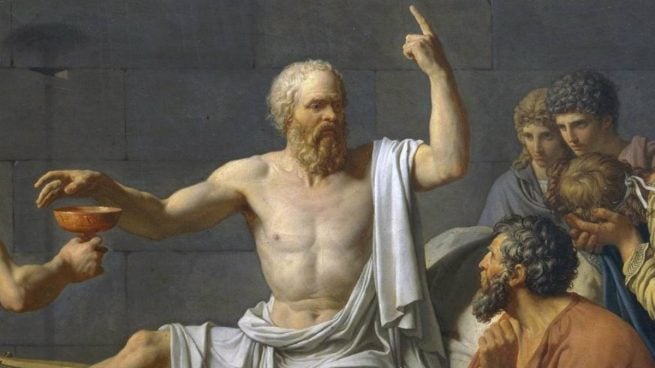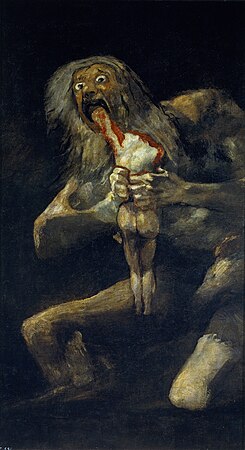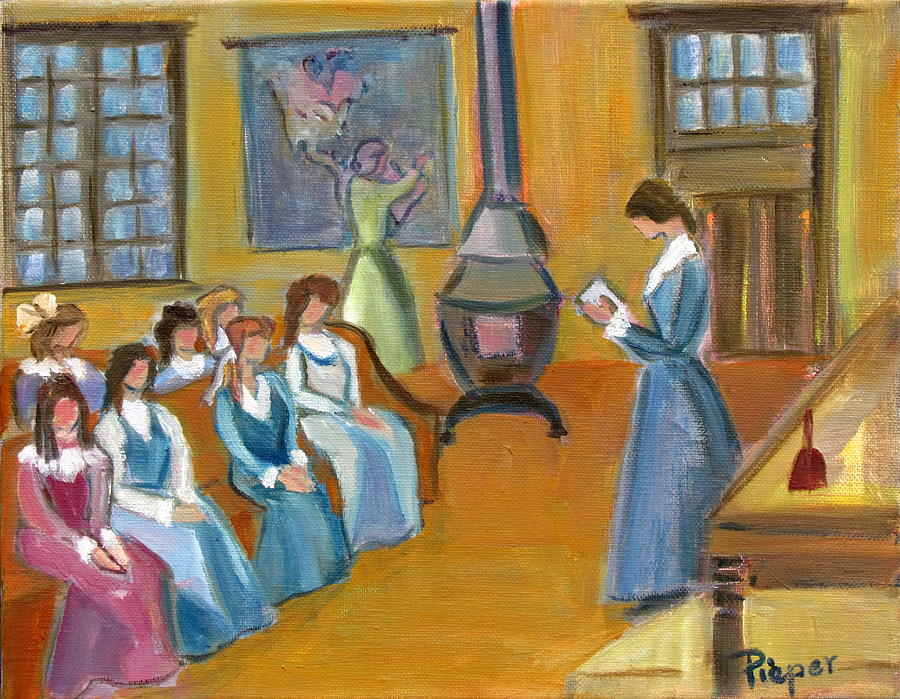an international and interdisciplinary journal of postmodern cultural sound, text and image
Volume 8, March-April-May 2011, ISSN 1552-5112
Jean-Paul Sartre and the Possibility of Authentic Love[1]
“There is always some madness in love. But there is always some reason in madness,” says Nietzsche when he talks about man’s ultimate search for authentic love. Why are we so desperate looking for love? And why do we search for authentic love; that is love which is not motivated by other reasons than love itself? And can this kind of love really be found? In this paper I discuss the possibility of authentic love in the light of Jean-Paul Sartre’s philosophy.
Sartre’s whole philosophy is motivated by the question of how mankind can realize its endless freedom. Man is endowed with unlimited freedom; but because he interacts with others who are endowed by the same freedom and he has to deal with certain obstacles that the environment imposes on him, this unlimited freedom is always in danger. Man’s unlimited freedom is constantly at risk. According to Sartre, freedom is especially at risk in the encounter with the other. In L’Être et le Néant Sartre shows that the encounter of the other leads to alienation. The other reveals something about me which remains a secret to me. When I recognize that part as my being, I become dependent on the other. In Huis Clos Sartre states his famous quotation that ‘l’enfer c’est les autres’. Sartre argues that a life is hellish when a person becomes completely dependent for dignity on the judgment of others. This is also the primal reason why Sartre argues that loving relationships are doomed to fail. Love is a concrete form of the encounter with the other and this relation is characterized by conflict. Love is a concrete form of the object-subject relationship which is the relationship I fall into when I encounter the other. L’Être et le Néant is an ontology which is grounded upon consciousness which experiences itself as a lack of being and which desires to be. Because of this desire to be, consciousness has the tendency to possess the other and it will try to be the way the other sees me.
In this paper I will show that the way in which consciousness experiences itself leads to acts of bad faith. Sartre’s ontology in L’Être et le Néant is essentially an account of bad faith. Based on the notes in Cahiers pour une morale, I will reconstruct the possibility of authentic love wherein I can love the other without harming his subjectivity or giving up my freedom.
It’s hard to deny that Sartre’s account of love - and even his ontology about human relationships - is rather pessimistic. It seems that harmonious or authentic relationships with others are impossible. Every encounter with the other is a threat to my freedom; hostile and conflictual. The encounter with the other is determined by the gaze (le regard) of the other. Relationships are based on the way we see the other. Le regard forms the primal obstacle in every concrete relationship and is the reason why relationships are characterized by conflict. Although L’Être et le Néant does not give any possibility to escape the gaze, later works of Sartre do open some relief. Before I discuss the escape from the gaze, I will however first discuss in detail how the gaze alienates me. Because Sartre’s whole ontology and his ethics are based on his particular theory of the nature of human consciousness, I will start of by setting forth Sartre’s phenomenology of human consciousness.
II. Consciousness and its absolute freedom
Sartre explains in the first chapters of L’Être et le Néant the difference between the en-soi (a thing) and the pour-soi (human consciousness). The en-soi is characterized by the fact that it is completely filled with being; the en-soi only is. The pour-soi is something completely different. The nature of the pour-soi is that it is not, which leads to the fact that the pour-soi can reflect on itself. The nature of the pour-soi and the way it experiences itself has an effect on how we approach others. I will first show (1) how Sartre characterizes the relationship between thetic and non-thetic consciousness as a relationship of being. Sartre argues furthermore (2) that this relationship of being is made possible by the fact that consciousness is cloven. This split is experienced by consciousness (3) as a deficiency, which (4) determines the encounter with the other.
Sartre argues in L’Être et le Néant against
“Toute conscience est positionnelle en ce qu’elle se transcende pour atteindre un objet, et elle s’épuise dans cette position même: tout ce qu’il y a d’intention dans ma conscience actuelle est dirigé vers le dehors, vers la table; toutes mes activités judicatives ou pratiques, toute mon affectivité du moment se transcendent, visent la table et s’y absorbent.”[2]
Because the non-thetic consciousness is the source of the thetic consciousness it follows that every experience is experience of something. Consciousness is not a passivity, but an activity. It is the activity that directs itself towards everything that is. As such, consciousness is pure spontaneity which is able to transcend itself and direct itself towards something outside of it.
The relationship between consciousness and that which it is conscious of has a negative character. Consciousness experiences that which it is conscious as something-which-it-is-not. When I see a house, I experience the house as something which I am not. Sartre calls this tendency the internal negation of consciousness. Consciousness has the capacity to distance itself from what is presented, which implies that consciousness has the capacity to ‘sécréter un néant qui l’isole”. Because consciousness is in its core tied to ‘nothingness’, it is completely free. The activity of consciousness is identical to unlimited freedom.
How does consciousness experience the néant, or the gap that exists between consciousness and that which is presented to it? If an experience is not identical to itself, it is what it is not. We are not the waiter that serves plates to others, but are playing that we are a waiter. Main point is that we never can just ‘be’, as the en-soi, but are always at a distance of ourselves. The being of consciousness is always a ‘borrowed being’ in the sense that consciousness fills itself with being that is different from itself:
“La réalité-humaine, en se dépassant vers sa propre possibilité de négation, se fait être ce par quoi la négation par dépassement vient au monde; c’est par la réalité-humaine que le manque vient aux choses sous forme de ‘puissance’, ‘d’inachèvement’, de ‘sursis’, de ‘potentialité’.”[3]
Consciousness experiences this ‘borrowed being’ as a shortage and tries to complement this shortage. It is not that consciousness wants to be a mere en-soi which is ‘plain being’. The pour-soi is not a modification of the en-soi that desperately tries to get back to its original position. Sartre argues that the pour-soi desires to be an en-soi-pour-soi; it wants to appropriate that which it is conscious of. We don’t want to act as a waiter, but we want to be a waiter.
The desire to be makes consciousness strive for something which is doomed to fail. The desire to be is also the reason why loving relationships are doomed to fail. When we encounter the other we try to appropriate the being which is revealed by the other.
III. The encounter with the other
The encounter with the other is fundamentally different from the encounter with the lifeless en-soi. When I encounter a tree, I experience myself as being-different-then-that tree. When I encounter another human being, I experience him as a consciousness which is not my consciousness. The difference however is that the en-soi cannot reflect on my being, while the other human being does have the possibility to reflect on me. And that creates the possibility of being-seen-by-the-other (le regard). This being seen by the other arouses in me feelings of shame or pride. In feelings of shame and pride, I realize that I’m ashamed or proud of that which is my being. The experience of shame and pride are mediated by the encounter with the other. Feelings of shame and pride are not only the recognition that there is another consciousness who sees me, but also involves a recognition that I am the way the other sees me. I accept the fact that I have become an object:
“La honte pure n’est pas sentiment d’être tel ou tel objet répréhensible mais, en général, d’être un objet, c’est-à-dire de me reconnaître dans cet être dégradé, dépendant et figé que je suis pour autrui.”[4]
The recognition that I am the way the other sees me, leads to a form of alienation. The way I appear to others is knowledge that remains inaccessible to me. I can see myself in the mirror but this will not be the same as the way I appear to others. In feelings of shame and pride, I recognize that I am the way the other sees me, without knowing what this being is. Because this part of my being remains unknown for me, I am totally dependent for my being on the other:
“L’échappement à moi du monde, lorsqu’il est relatif et qu’il est échappement vers l’objet-autrui, renforce l’objectivité; l’échappement à moi du monde et de moi-même, lorsqu’il est absolu et qu’il s’opère vers une liberté qui n’est pas la mienne, est une dissolution de ma connaissance: le monde se désintègre pour se réintégrer là-bas en monde, mais cette désintégration ne m’est pas donnée, je ne puis ni la connaître ni même seulement la penser.”[5]
Sartre says that in the encounter with the other, consciousness has to deal with the structure of being-for-the-other. In this being-for-the-other I have become an object. For the other, I am only the way he sees me and nothing else. Le regard is hostile to my freedom.
Sartre outlines in L’Être et le Néant one of the most common ways to experience others. We tend to classify others in terms of ‘old’ or ‘young’ or ‘nice’ or ‘rude’. By classifying the other as such, we say that he is the way he is. By pinning the other down on the way we see him, we deny that he is anything different than the being we attribute to him. A concrete relationship of this being-for-the-other is the love for the other.
IV. The love for the other in the object-subject relationship
I have outlined the Sartrean nature of consciousness and its tendency to be an en-soi-pour-soi. Consciousness has a desire to be and tries to appropriate the being which it is conscious of. The desire to be is something which is an act of bad faith, because consciousness tries to be something which it is not. Next I will discuss how the desire to be makes it impossible for individuals to engage in loving authentic relationships.
We have seen that when I encounter the other, the other objectifies me with his look. By the objectification of the look of the other, consciousness has the structure of being-for-the-other. I have become dependent on the other for part of my being. The structure of being-for-the-other makes it impossible to escape the look of the other and to remain free. Sartre describes in L’Être et le Néant the concrete attitudes of being-for-the-other. One of the concrete attitudes is love. In love I want to be the way the other sees me and try to force the other to love me. Off course, this is doomed to fail. In love I try every moment to highlight to my lover that I am the way he sees me. I hope to impress the other so he will love me:
“En un mot, je m’identifie totalement à mon être-regardé pour maintenir en face de moi la liberté regardante de l’autre et, comme mon être-objet est la seule relation possible de moi à l’autre, c’est cet être-objet seul qui peut en servir d’instrument pour opérer l’assimilation à moi de l’autre liberté.”[6]
In loving relationships, I try to be the as the other sees me and thus give up my freedom, in order to make the other love me, which is also an act of bad faith. Love is paradoxical because I’m assuming my being-for-the-other and try to love the other as a subject by deceiving him and actually denying his freedom and thus his subjectivity. I want so desperately that the other loves me that I’m trying to seduce him into loving me as the being which I’m not.
The desire to be and its tumble into acts of bad faith, makes it impossible to love the other without falling into the object-subject relationship. There is always the question of alienation and conflict. An authentic loving relationship, wherein one freedom loves the other as freedom without traces of alienation, is impossible within the phenomenology of L’Être et le Néant. There is however a possibility of escaping bad faith, which is already indicated in L’Être et le Néant.
V. Authenticity, the moral conversion and authentic love
I’ve just discussed the paradoxical relationship of love. Loving relationships are doomed to fail because they are stuck in an object-subject scheme. I cannot love the other without losing my freedom or without denying the freedom of my loved one. The concrete relationships that Sartre describes in L’Être et le Néant are all characterized by conflict and alienation. Sartre seems to be pessimistic about the possibility of an authentic loving relationship where both lovers retain their freedom.
When we take L’Être et le Néant as the only ontology of human relations, we are forced to conclude that Sartre does indeed deny the possibility of a loving relationship that is not characterized by conflict. But this is at least a little bit odd. In real life, Sartre had a long lasting relationship with Simone de Beauvoir. If this relationship alienated him, why would he go on with it? Did he really want to see his love in terms of objectification and alienation?
I think that the answer is clearly ‘no’. Sartre wasn’t denying that love can be authentic, but his ontology in L’Être et le Néant is an ontology of bad faith. The desire to be that motivates consciousness prevents consciousness from being truly free to maintain an authentic loving relationship. When we analyze his later works, Cahiers pour une Morale and L’Existentialisme est un Humanisme, we see a possibility to escape the acts of bad faith. Even in L’Être et le Néant Sartre indicates already that there is a possibility to overcome bad faith:
“Ces considérations n’excluent pas la possibilité d’une morale de la délivrance et du salut. Mais celle-ci doit être atteinte au terme d’une conversion radicale dont nous ne pouvons pas parler ici.”[7]
Sartre indicates here a possibility of authenticity wherein consciousness does not lapse into bad faith. The term ‘authenticity’ is in Sartre’s work first introduced in his notes during the second world war. Sartre notes that authenticity is reached by despair. Despair (désespoir) is the recognition that my fundamental project cannot be reached and that human life is pervaded by failure. Consciousness’ fundamental project is its desire to be; to become an en-soi-pour-soi. It is this project that leads to bad faith.
An authentic attitude towards the other is tied to the failure of being. Authenticity becomes possible when mankind gives up his desire to be and accepts the fact that he never is, but always has to be. This is the radical conversion which Sartre indicates in his footnote in L’Être et le Néant. Authenticity means that consciousness acts according to what it is, which is nothing:
“La conversion: la reconnaissance de moi-même comme pour-soi ek-statique entraîne la reconnaissance de l’esprit comme totalité détotalisée.”[8]
The radical - or moral - conversion has also implications for the concrete relations to the other. The moral conversion makes it possible that I love the other without losing my freedom or harming his subjectivity. Remember that in L’Être et le Néant, loving relationships are doomed to fail because I try to be the way the other sees me and use this in order to make the other love me. In the moral conversion, I’m giving up the desire to be, which implies that I no longer want to be the way the other sees me. I accept the fact that I am not; that I will change every moment and that every effort of making the other love me is doomed to fail. I do no longer desire to be the center of attention for my lover and I am giving up my desire to be somebody who I’m essentially not. De Beauvoir says in Pour une morale de l’ambiguïté (1947) that when mankind loves the other in an authentic way, it means that he loves the other as other and not as the person that needs to love me:
“L’aimer authentiquement, c’est l’aimer dans son altérité et dans cette liberté par laquelle il s’échappe. L’amour est alors renoncement à toute possession, à toute confusion; on renonce à être a fin qu’il y ait cet être qu’on n’est pas.”[9]
Sartre says that in an authentic loving relationship I approach the other ‘as an other consciousness that needs to realize its own projects’. This means that I cannot trick the other into loving me. In authentic love, I need to accept the fact that the other may not love me the way I love him.
In Sartre’s ontology the pour-soi defines itself in relation to the en-soi, which leads to an experience of deficiency. Consciousness defines itself as a lack of being and strives therefore to be. It encounters the other from this desire to be. When the other looks at me, he reveals something of my being which I cannot access. The other treats me as an object and because I strive to be, I recognize this being as part of my being. Consciousness has the structure of being-for-the-other and looses its freedom. The relationship to the other is being characterized by conflict and alienation because the other is not being recognized as a subject without reducing myself to an object.
Because the concrete relations to the other such as love are paradoxical and mankind falls every time into bad faith, the ontology of L’Être et le Néant calls for deliverance. The moral conversion is the answer to this call. Due to the conversion, consciousness experiences itself in a different way; it no longer experiences itself as a lack of being, but accepts the fact that it is a nothing and that I can only become. Essential for the conversion is the acceptance of the fact that all human projects are imbued with failure. In love this means that I need to accept the fact that I cannot force the other to love me or to see me in a certain way. I cannot possess the other and I need to accept the fact that he has its own projects that he needs to realize.
Accepting the fact that the other has his own projects is hard for us. It is therefore unavoidable that I will sink back into the attitude of bad faith. Think of a woman or man who fears to be left alone and tries to live up to the other’s expectations. We try often to be a person we are not. But we also often experience that we cannot live up to these expectations and cannot be somebody who we are not.
And in these feelings of despair the moral conversion and authentic love become possible.
Bibliography
De Beauvoir, S. (1947). Pour une Morale de l’ambiguïté. Parijs: Gallimard. 1962.
Sartre, J.P. (1939-1940). Carnets de la drôle de guerre. Parijs: Gallimard. 1995.
Sartre, J.P. (1943). Huis Clos. Parijs: Gallimard. 1968.
Sartre, J.P. (1943). L’Être et le Néant. Parijs: Gallimard. 2005.
Sartre, J.P. (1945). L’Existentialisme est un Humanisme. Parijs: Nagel. 1962.
Sartre, J.P. (1983). Cahiers pour une Morale. Parijs: Gallimard.
an international and interdisciplinary journal of postmodern cultural sound, text and image
Volume 8, March-April-May 2011, ISSN 1552-5112
[1] This article is originally presented at the 18th Biennial Conference of the North American Biennial Conference of the Sartre Society (2011). The paper has been slightly adapted for Kritikos.
[2] Sartre, J.P. (1943). L’Être et le Néant. Parijs: Gallimard. 2005, p. 18.
[3] Sartre, E&N, p. 232
[4] Sartre, E&N, p. 328
[5] Sartre, E&N, p. 311
[6] L’Être et le Néant, p. 405
[7] L’Être et le Néant, p. 463
[8] Sartre, J.P. (1983). Cahiers pour une Morale. Parijs: Gallimard, p. 15
[9] De beauvoir, p. 96








